by Summer Lauterbach
REEF SAFETY AND ECOSYSTEM PRESERVATION
Coral reefs are important coastal ecosystems, as they act as a barrier for coastal erosion, provide shelter for marine animals, and help stimulate local economy. Coral is an animal made up of thousands of small polyps that have photosynthesizing zooxanthellae algae inside of the polyps to help the coral grow. There are two different types of coral: hard corals and soft corals. Hard corals are made of hard calcium carbonate skeleton and are the builders that provide structure to large reefs. Soft corals have no hard skeleton and can easily flow with current. Coral bleaching is currently a large issue endangering many coral reefs due to climate change and ocean acidification. The ocean is a large carbon sink, with the ability to absorb much of the carbon dioxide released into the atmosphere by human actions. This carbon absorption can increase ocean temperatures, causing coral bleaching (as zooxanthellae are only able to survive in a certain set of conditions). Algae gives coral its color, and when ocean conditions are less than optimal for primary production, the algae will die. Temperature, salinity, and pH are the main water quality parameters that coral’s algae can be sensitive to changes in. This will cause the coral skeletons to turn white, and if they become weak enough, the skeleton will break off into the sand.
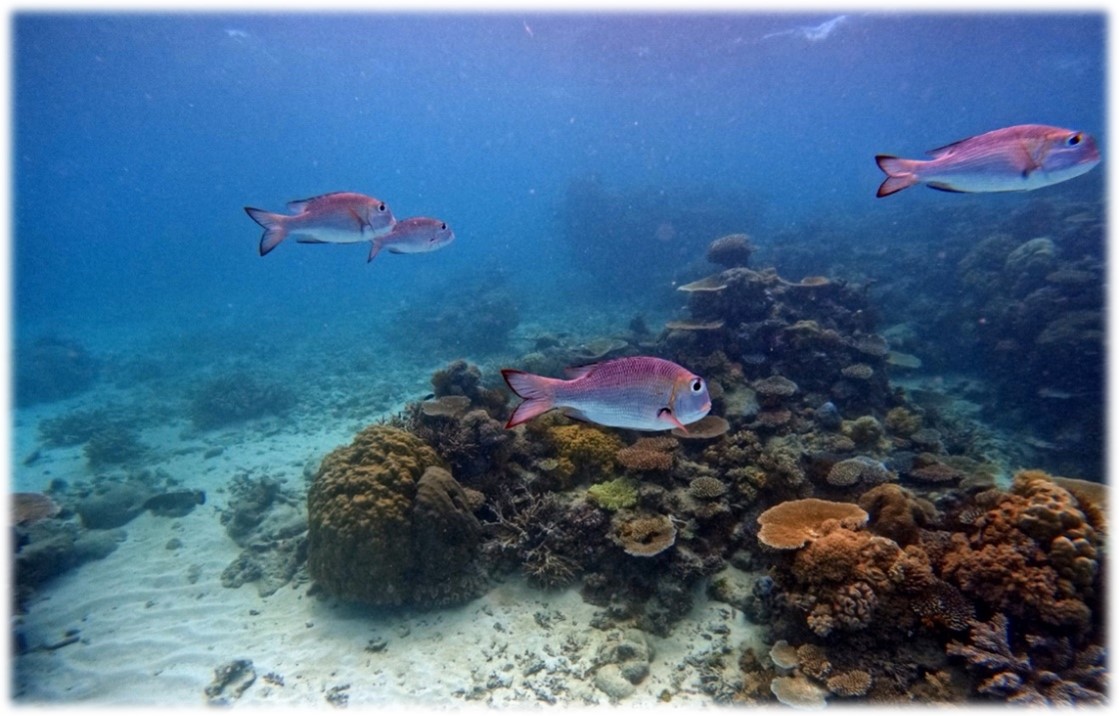
To learn more about coral reef ecosystems, we took a Reef Experience charter to dive on the Great Barrier Reef. During a safety briefing on the dive boat, we learned about the different protection zones that are on the reef: blue zones are fishing zones, green zones are tourist exploration zones (no take zones), and pink zones only permitted to registered scientists. These zones are in place to help preserve the health of the coral and the fish populations. Common fish populations on the reef include parrot fish, Māori wrasse, anemone fish, turtles, and reef sharks.
Scientists study coral reefs and attempt to preserve the reef that remains intact. Although the scientific community can have a larger impact on reef health, the public can contribute to reef preservation by using reef safe sunscreen, taking garbage from the reef, and educating others about the reef. The local community to the Great Barrier Reef is invested in preserving this ecosystem, as it provides many important services to the economy.
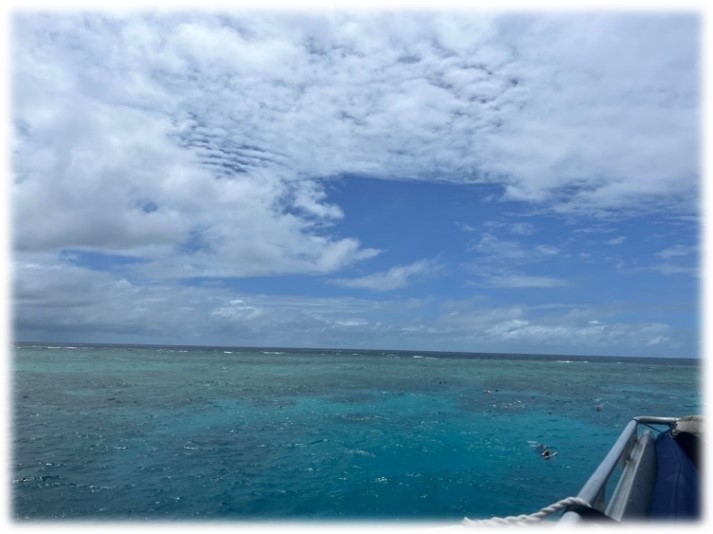
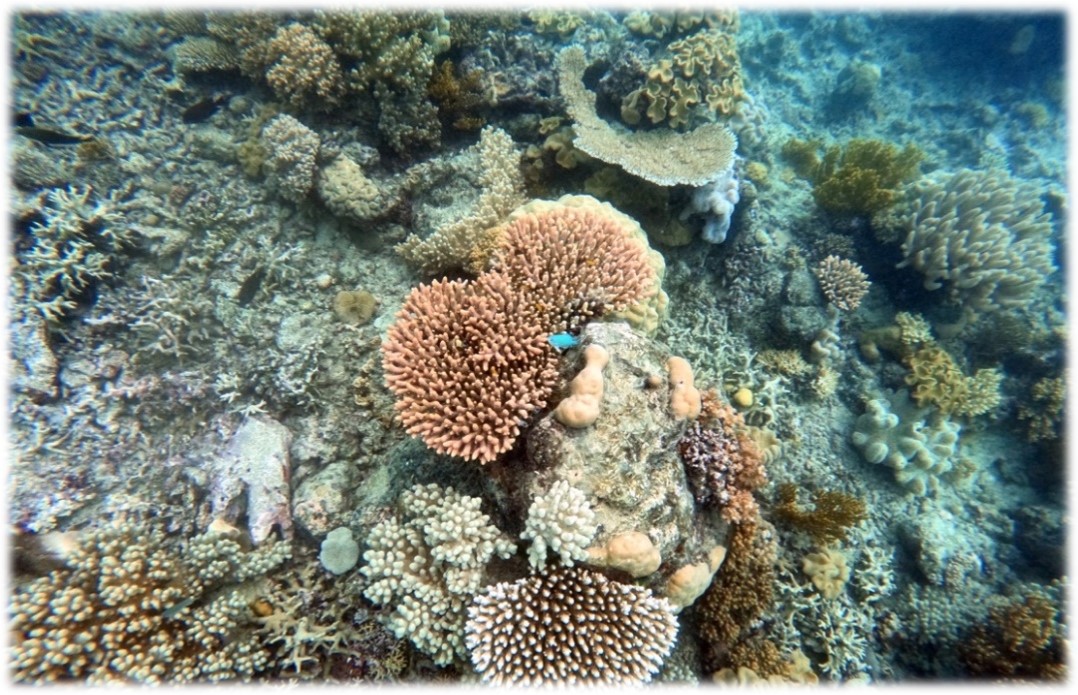
ECOTOURISM ON THE GREAT BARRIER REEF
Megan Cooper was the main marine biologist on board the Reef Experience boat that I was able to interview on the implications of climate change on the Great Barrier Reef and ecotourism. She is originally from Canada and has an educational background in Fisheries Studies. Currently, Megan is interested in studying marine and freshwater biology, as well as forestry.
The ecotourism industry makes up a major part of the economy in this area of Australia, “where the rainforest meets the reef”. The Great Barrier Reef stimulates the economy through ecotourism in green zones with snorkeling and SCUBA, as well as fishery areas in the blue zones. The impacts of COVID-19 on the coral reef mainly changed the ecotourism industry with less boats out each day. However, the lessened traffic on the reef did not make much of a difference for bleaching. The impacts of bleaching can be difficult for the local community to physically see from shore, but an increase in seafood prices and change in catch availability can be an indicator. For those that are out on the reef almost daily, like marine scientists and ecotourism guides, changes to the reef due to bleaching can be more physically noticeable over time.
THE FUTURE OF THE GREAT BARRIER REEF
I was excited to see the vibrant coral and booming habitat for fish and other marine animals. However, what I saw at the Great Barrier Reef was not what I excepted. The coral was mostly dull, but a few did stand out in color. There were not as many fish as I had pictured in my mind. In between the small reefs, there was graveyards of coral that had bleached and broken off into the sand. All this considered, the reef and its habitants were very beautiful and worth seeing.
This ecosystem left me with a bittersweet feeling that the oceans are in danger because the most famous coral reef in the world was dying. The effects of climate change on coral reefs today may not be reversible, however, there may be some actions we can take to help combat this issue. In the local community, citizen science is an important factor in gaining more data about bleaching. Many locals participate in the Great Reef Census, by taking GoPro photos and footage to compare the changes in the reef over time. There are also organizations such as the Eyes on the Reef surveys for algae growth, Citizens of the Great Barrier Reef, and the Marine Park Authority that use their resources to help conserve the current reef and put research toward reef recovery in bleached areas. Many locals are also invested in reef conservations for the indigenous communities to fish in, as the Aboriginal communities are important to Australian culture. Reef restoration is the future of reef life that has been damaged by bleaching events. Coral gardens and artificial coral growth may be the future of reef health with climate change advancement. To maintain the future livelihood of coral reef systems, climate change will need to be managed and reef restoration efforts will need to continue to blossom.
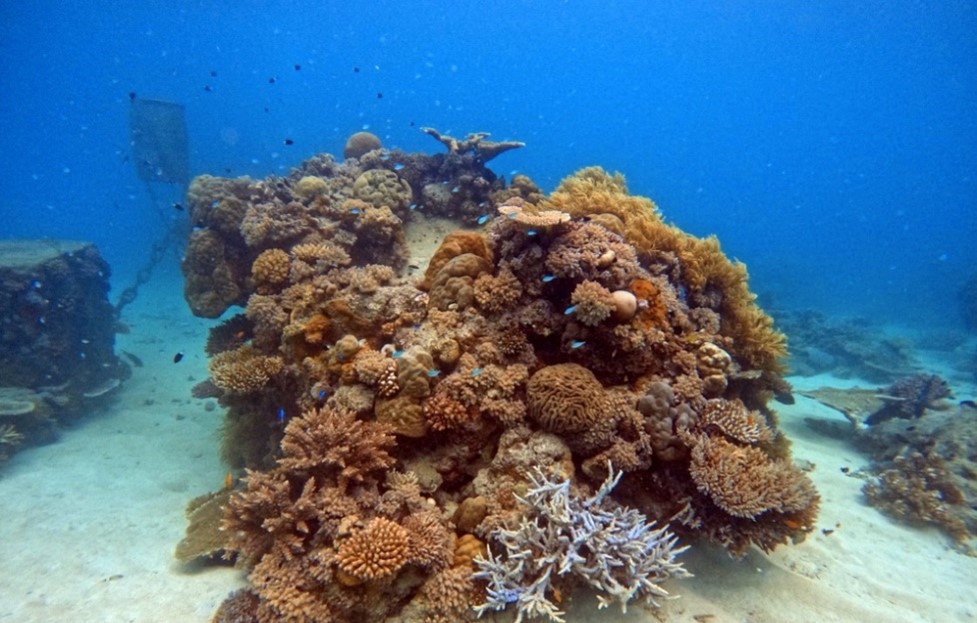
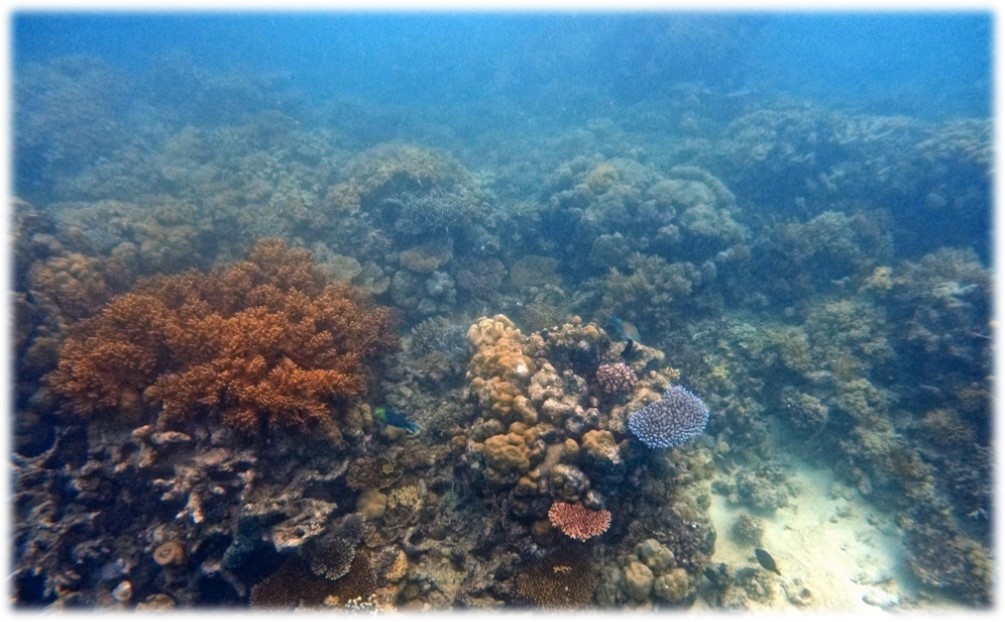
Key Takeaways
- Ocean acidification from climate change and increased CO2 leads to coral bleaching.
- Using reef safe sunscreen, collecting garbage from the reef, and reef education are simple tasks that the local community can partake in to conserve these ecosystems.
- Temperature, salinity, and pH of ocean water are the most important parameters to maintain in order to prevent bleaching.
- Coral gardens and artificial reefs may be the future of reef health with climate change advancement.